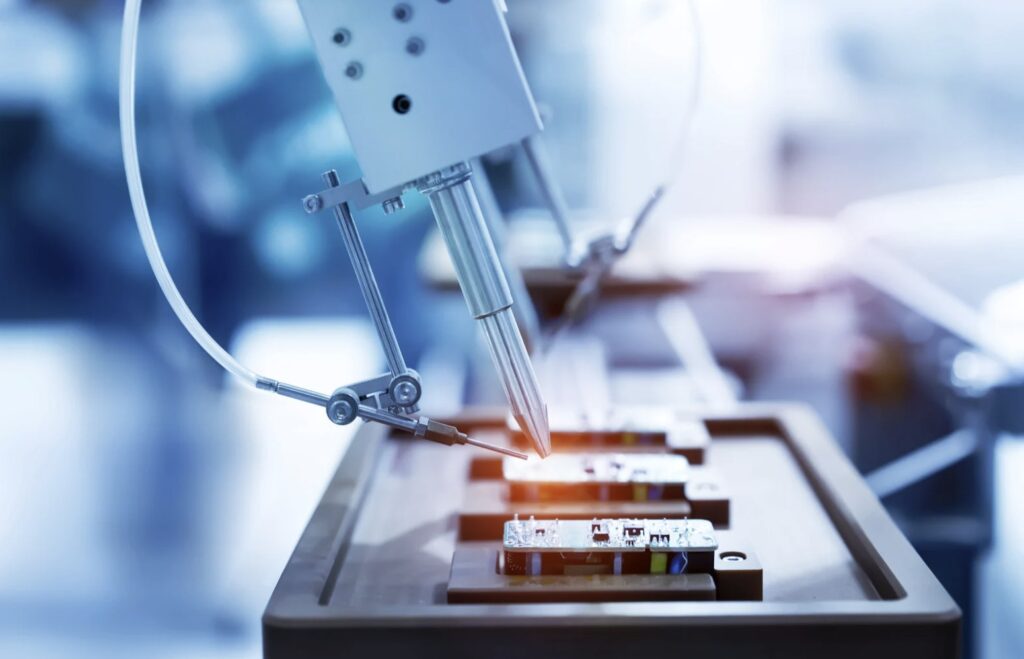Printed circuit boards (PCBs) are integral to a wide array of electronic devices, including those used in outdoor applications such as telecommunications equipment, automotive systems, and industrial machinery. These environments expose PCBs to harsh conditions, including moisture, temperature fluctuations, and pollutants, all of which can accelerate corrosion.
This poses a significant challenge for engineers involved in PCB design and PCB fabrication, as corrosion can lead to failures, reduced performance, and a decreased lifespan of electronic devices. Therefore, understanding how to protect PCBs from environmental damage is crucial for ensuring their reliability and longevity.
This article will explore the causes of corrosion in PCBs, the impact it can have on performance, and effective methods for prevention.
Understanding Corrosion in PCBs
Corrosion in PCBs typically occurs when metal components on a circuit board react with moisture, pollutants, or other environmental factors. Common metals used in PCBs, such as copper, are particularly susceptible to corrosion.
This phenomenon can occur in various forms, such as oxidation, galvanic corrosion, and uniform corrosion, each resulting from different environmental factors.
- Types of Corrosion:
- Oxidation: This type involves the loss of electrons from metal surfaces, often leading to the formation of oxides. Copper traces on PCBs are particularly susceptible to oxidation, which can impede electrical conductivity.
- Galvanic Corrosion: Occurs when two dissimilar metals come into contact in the presence of an electrolyte, leading to accelerated corrosion of one of the metals.
- Uniform Corrosion: Characterized by a consistent loss of material over a surface, this type can be challenging to detect until significant damage has occurred.
- Impact of Corrosion:
Corrosion can significantly impact a PCB’s functionality, leading to increased resistance, signal loss, and eventual circuit failure.
- Increased resistance: Corrosion can create a barrier that impedes electrical flow, leading to malfunction or failure of the circuit.
- Mechanical degradation: Corroded components may become brittle or weak, causing physical damage to the board.
- Short circuits: Corrosion can bridge gaps between circuitry, creating unintended paths for electrical current that can result in failures.
Common Causes of Corrosion
- Moisture: High humidity can lead to the formation of condensation, which provides an ideal environment for corrosion.
- Pollutants: Dust, smoke, and other airborne contaminants can settle on PCB surfaces, accelerating the corrosion process.
- Temperature fluctuations: Rapid changes in temperature can contribute to condensation and create additional stresses on materials.
- Chemical exposure: Certain chemicals can be corrosive and may originate from the manufacturing process, cleaning solutions, or even ambient air.
The Importance of Corrosion Prevention
Implementing effective corrosion prevention strategies not only extends the life of PCBs but also enhances performance and reliability. In industries such as aerospace, automotive, and consumer electronics, even minor failures can lead to significant consequences. Thus, investing in anti-corrosion techniques is crucial for maintaining the integrity of electronic devices.

Effective Methods for Protecting PCBs from Corrosion
1. Use of Protective Coatings
One of the most effective ways to prevent corrosion is through protective coatings. These coatings create a barrier between the metal and environmental factors. Common types of coatings include:
- PCB Conformal Coatings: These polymeric materials conform to the contours of the circuit board, providing a thin layer of protection against moisture and contaminants. They are available in various forms including silicone, acrylic, and urethane.
- Potting Compounds: Designed to encapsulate the entire circuit board, potting compounds provide enhanced protection against moisture, impact, and vibration. They are particularly useful in demanding environments.
2. Material Selection
Choosing corrosion-resistant materials during the manufacturing process is crucial. For example, using:
- Gold-plated connectors: Gold is highly resistant to corrosion and can significantly enhance the durability of critical connection points.
- Copper alloys: Certain copper alloys have improved resistance to corrosion compared to standard copper.
3. Controlled Environment
For sensitive electronics, maintaining a controlled environment can help mitigate corrosion. Consider these strategies:
- Dehumidifiers: Using dehumidifiers in storage and manufacturing areas can drastically reduce moisture levels.
- Climate-Controlled Enclosures: Storing finished products in climate-controlled environments helps minimize exposure to harmful conditions.
4. Regular Maintenance and Inspection
Routine maintenance and inspection can catch early signs of corrosion before they lead to failure. Regularly scheduled checks help identify:
- Excessive moisture: Monitoring humidity levels can alert you to potential risks.
- PCB Contamination Testing: Inspecting for dust or pollutants ensures that protective measures are working effectively.
5. Proper Packaging
When transporting or storing PCBs, proper packaging can play a vital role in preventing corrosion. Using:
- Anti-static bags: These help prevent electrostatic discharge and protect against dust and moisture damage.
- Desiccants: Including desiccants in packaging can absorb moisture and create a drier environment.
6. Employing Advanced Manufacturing Techniques
Integrating advanced manufacturing practices can enhance the corrosion resistance of PCBs:
– Surface Finis: Using surface finishes such as ENIG (Electroless Nickel Immersion Gold) or OSP (Organic Solderability Preservative) can improve resistance to corrosion.
– Electroplating: Applying a layer of protective metal through electroplating can enhance corrosion resistance on copper traces.
Conclusion
Corrosion remains one of the primary threats to the integrity and performance of PCBs. However, by employing a combination of protective coatings, careful material selection, environmental control, regular inspections, proper packaging, and advanced manufacturing techniques, manufacturers can significantly reduce the risk of corrosion. Protecting circuit boards not only enhances their durability but also ensures the reliability of the electronic devices they power.
